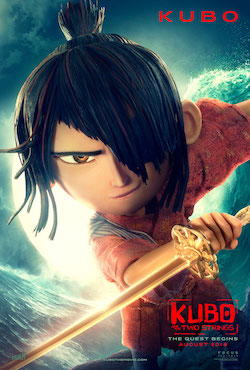Student-created media: stop motion animation
 Stop motion is an animation technique where objects are moved in small increments and frames are shot like individual photos. Audiences have been enjoying the results for over a century. Some of us remember TV’s Gumby Show from the 1950s and 60s. More recent Hollywood examples include Wallace & Gromit, and Nightmare Before Christmas.
Stop motion is an animation technique where objects are moved in small increments and frames are shot like individual photos. Audiences have been enjoying the results for over a century. Some of us remember TV’s Gumby Show from the 1950s and 60s. More recent Hollywood examples include Wallace & Gromit, and Nightmare Before Christmas.
Many people thought computer graphics (CGI) would kill stop motion, but plucky animators continue to create unique films with clay, sand, paint, paper, and other materials. Laika Entertainment’s Kubo and the Two Strings (2016) is a current example.
The video below inspired me to write this article. It was released in May 2016 by Off Book, a PBS web series that explores cutting edge arts: video games, typography, steampunk, and more.
The assignment
Stop motion animation is time consuming – even if you’re not trying to match Hollywood standards – but that doesn’t mean it’s out of the question for students. Start your planning by reviewing How to design a digital media assignment.
Consider making this a group project and limiting its length – perhaps to 30 seconds. A typical video has a frame rate of 30 frames per second (fps). A student-produced stop motion video could use 6 fps, however, so a 30-second piece would need 180 images instead of 900.
Content: the video can be a digital story, left wide open to student creativity. Or you may have a specific genre in mind, like a public service announcement, a TV commercial, or a how-to video. I found several examples of STEM-area projects where students illustrated a concept like mitosis.
Deliverables: milestones for this project might include a basic concept, treatment, storyboard or script, rough draft, published video, and self-assessment.
Rubric: a Google search shows that many examples are available. Here’s a composite of specific items you might want to evaluate, as well as a more generic grid for evaluating student media.
Objects you can animate
Lego bricks are popular building materials for stop motion. Jane’s Brain is an example of a “brickfilm” . You can buy Lego kits that feature superhero characters, farmers, first responders, and many other kinds of “actors”.
When modeling clay is used, the genre is called “claymation”. Besides clay (or Play Doh) you’ll probably want an armature (“bones” made of wire or plastic that hold your character together) and a few tools to shape the material.
A posable action figure could also star in your film. Some models don’t allow much freedom of motion, but a generic character like Modibot Mo seems perfect for animation. You might even try Mr. Potato Head!
Pieces of construction paper and other flat materials are also popular. This is how the early 1990s episodes of “South Park” were made, as was this viral Angry Birds Animation. You can even do animation with a whiteboard and markers. RSA Animate uses such a format to make videos like this one about Dan Pink’s Drive.
A note on Kits: A quick search on Amazon for inexpensive stop motion animation kits yielded one that’s clay-based and one with posable plastic figures. There’s also one with sets and one that has a green screen!
Software and apps
Several free or inexpensive titles receive good reviews online, including:
- PicPac (Android)
- Lapse It (iOS)
- JellyCam (Windows or Mac)
- Stop Motion Studio (Versions for iOS, Android, Mac and Windows) – I used the free iPad version to create a simple video (shown below). If I do another one I will pay for the upgrade.
Additional resources
- Claymation – documentary by Oscar winner Will Vinton (1978)
- How to Create a Stop Motion Animation (wikiHow).
- How To Do Stop Motion Animation (NY Film Academy)
- Inspiration: 5 Remarkable Stop-Motion Design Projects (HOW Design)
- Kubo and the Two Strings: Behind the Scenes – see stop motion being created and watch voice actors do their thing
